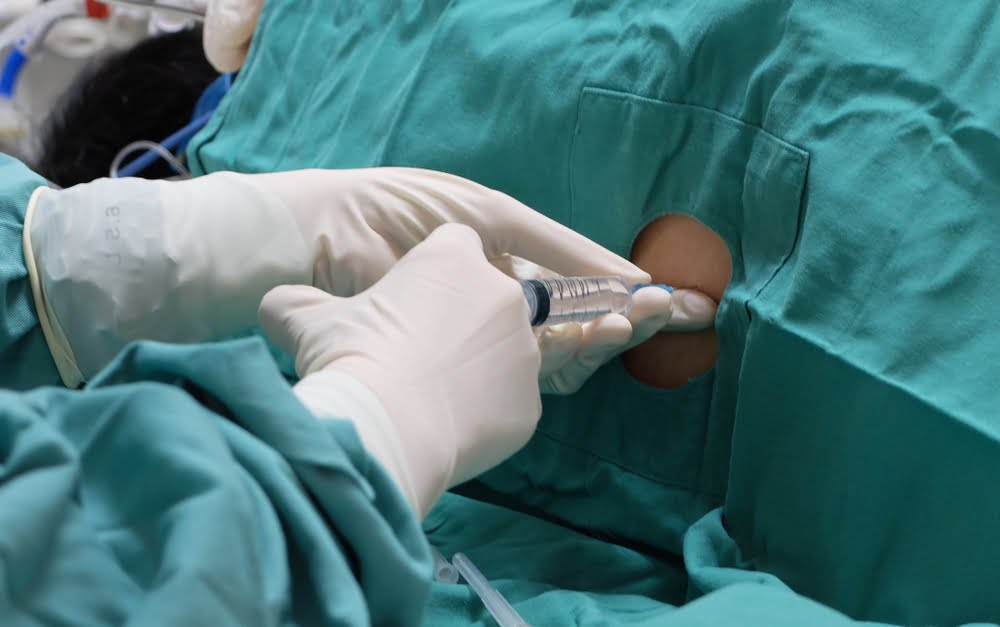Lumbar puncture procedure in Türkiye
A lumbar puncture is a procedure in which the fluid surrounding the spinal cord (called cerebrospinal fluid, or CSF) is withdrawn through a needle and examined in a laboratory.
Why is a lumbar puncture performed?
Lumbar puncture is performed to rule out the possibility of infection such as meningitis or encephalitis as a cause of epileptic seizures. In the diagnosis of chronic demyelinating neurological disorders and diseases of the central nervous system (CNS). In addition to meningitis, such as meningitis, multiple sclerosis, Guillain-Barre syndrome, or headache of unknown cause. Examination of the fluid also shows the number and types of white blood cells, glucose level, types and levels of proteins, and the presence of bacteria, fungi, or abnormal cells. And also to measure cerebrospinal fluid pressure and injections of spinal anesthesia, chemotherapy drugs, or other medications.

Procedure steps:
before the procedure
The patient is asked to wear a hospital gown. Then the patient’s back is washed with a special antiseptic soap or iodine and covered with a sterile sheet. The positions that the patient takes during the procedure vary, such as lying on his side with his knees raised to his chest. Or sitting and leaning forward on a firm surface. These positions bend the back, which widens the spaces between the vertebrae and makes it easier for the doctor to insert the needle. And in the event that the patient is a child, someone will hold him in place during the operation.
during the procedure
First, a local anesthetic is injected into the lower back to numb the lumbar puncture site before inserting the needle. The patient feels stinging for a short time. Then a thin, hollow needle is inserted between the two lower vertebrae (lumbar region), through the spinal dura mater into the spinal canal. During this part of the procedure, the patient feels pressure in the back region. After that, he may be asked to change his position slightly and the pressure of the fluid reservoir measured. It withdraws a small amount of liquid to measure the pressure again and analyze it. Finally, the needle is removed and the lumbar puncture site is covered with a sterile bandage.
Ultrasound can sometimes be used for young children and infants to help the doctor locate the needle more accurately and avoid straying too far.
After a lumbar puncture:
It is possible to return to home or work on the same day of the procedure, but it is advisable to take a break, and it is also possible to take a pain reliever, as a pain reliever such as “Acetaminophen” helps reduce headaches or back pain.
Results:
Lumbar puncture fluid samples are sent to a laboratory for analysis. laboratory technicians check a number of things when examining the samples, including:
- General appearance of the sample: The cerebrospinal fluid is clear and colorless, but if it is cloudy, yellow, or pink, this may indicate abnormal bleeding. A green color of the cerebrospinal fluid may indicate an infection or the presence of bilirubin, a yellow pigment.
- Protein levels: High levels of protein over 45 milligrams per deciliter (mg/dL) may indicate an infection or other inflammatory condition.
- White blood cells: The cerebrospinal fluid usually contains up to 5 white blood cells (mononuclear leukocytes) per microliter, and increased numbers indicate a problem.
- Sugar (glucose): A low level of glucose in the cerebrospinal fluid indicates an infection or other condition.
- Microorganisms: The presence of bacteria, viruses, fungi, or other microorganisms indicates an infection.
- Cancer cells: The presence of abnormal cells in the cerebrospinal fluid, such as a tumor or immature blood cells, indicates certain types of cancer.
Cerebrospinal fluid pressure is taken into account to help determine a possible diagnosis after a lumbar puncture.
Risks of a lumbar puncture:
Lumbar puncture procedure in Türkiye is considered safe, but it carries some risks. These include:
Post-lumbar puncture headache: About 25% of people who underwent a lumbar puncture develop headaches due to fluid leakage into the adjacent tissues. The headache usually begins for several hours to two days after the procedure and may be accompanied by nausea, vomiting, and dizziness. It accompanies sitting or standing and disappears after lying down. The headache continues from A few hours to a week or more
Back pain: The patient may feel pain or pain in the lower back, possibly radiating down the back of the legs.
Bleeding: near the puncture site, or rarely into the epidural space
Brainstem herniation: Increased pressure within the skull can compress the brainstem after a sample of cerebrospinal fluid is removed.
Lumbar puncture procedure in Türkiye
The medical staff of surgical teams, doctors and consultants in REHABTÜRK can provide the best treatment options and free consultations – by striving to keep abreast of the latest medical technologies and techniques
